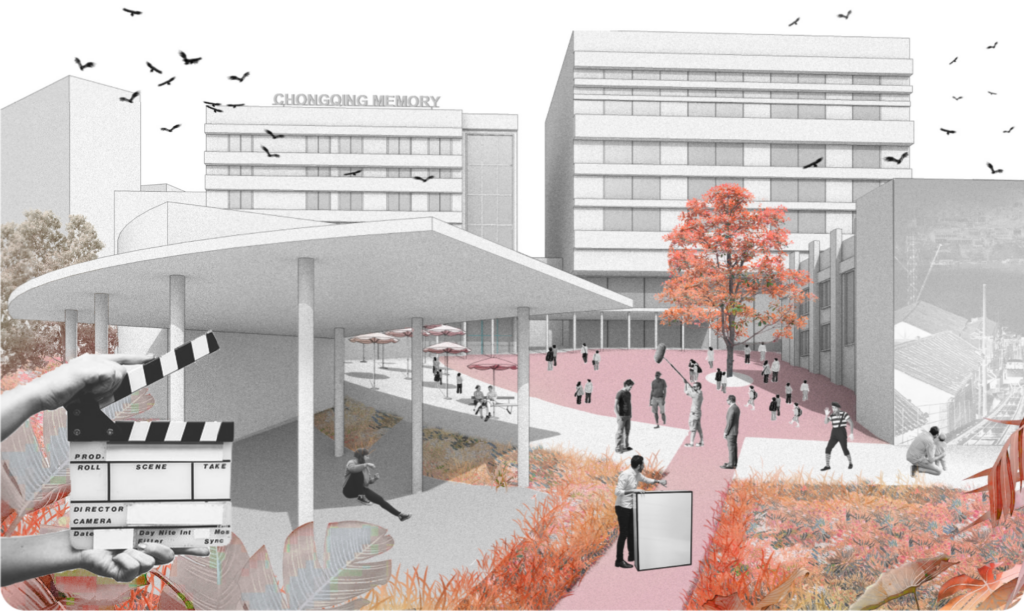Urban design project that rebuilds the local identity
Introduction
A worrisome trend: the disappearing of vernacular landscapes
Chongqing, known as “Mountain City”, is the only municipality and megacity in southwest China. Like other metropolises, rapid urban construction and thorough spatial revolution have occurred here. Yuzhong District, the heart of Chongqing, is the most densely populated area in Chongqing. It was the mother city, and Chongqing has been developing within the city walls of Yuzhong District for centuries. It was also a mirror of regional culture, reflecting the social and cultural traditions. However, the current Yuzhong District is a gathering place of financial institutions, banks, and shopping malls, containing some of the tallest skyscrapers in China and “XL” projects built by developers.
Modern, wealthy, and international are the most common impressions of Yuzhong District. But at the same time, there is an anxiety that entangles the local residents: as the vernacular landscape disappears, the memory of the city also fades away.
This project aims to explore urban design approaches of reconstructing the unique memories of a city in the context of globalization.
A brief history: develop in 100 years, disappearance in 20 years
The “vernacular landscape” here refers to a way of organizing streets and buildings based on the mountainous terrain, hot and humid climate, and social activities, which could also be called “traditional streets”. Until the 1990s, a large area of Yuzhong District was still covered by this landscape. In 1998, the Chinese government reformed the housing system, traditional streets with relatively flat terrain were demolished and replaced by concrete high-rise buildings. In 2015, due to poor sanitation and living conditions in traditional streets, the local government chose to demolish them. In 2019, 97% of the traditional streets in the Yuzhong District have been demolished.

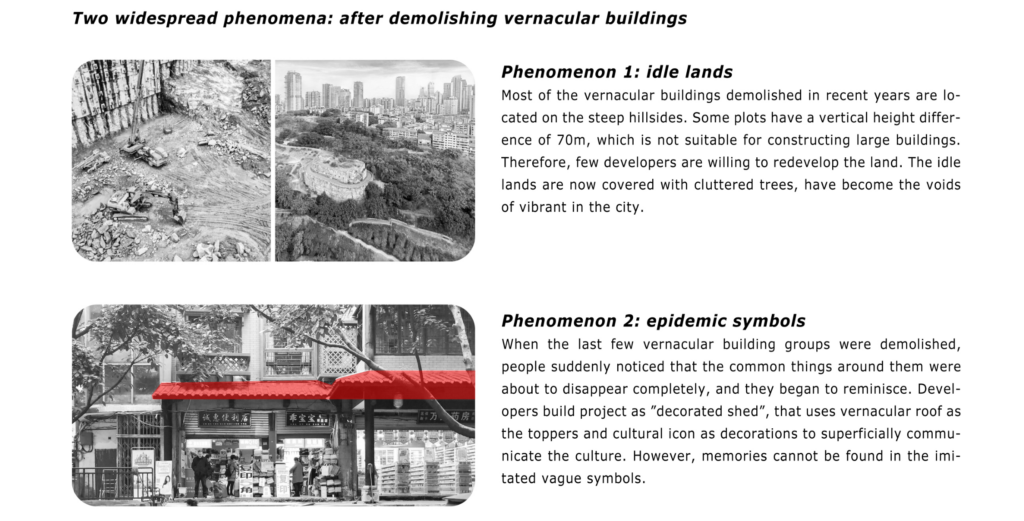
Planning Ideas – respond to the previous phenomenon
Idea A
Build urban leisure areas that bring citizens closer to nature and history. They promote the value of the plot and their neighborhood, forming complementary functions with the central commercial and financial district.

Idea B
Instead of creating vague symbols, try to shape the “experience”, which contains three dimensions: spatial experience, social experience, and cultural experience. The combination of three experiences reconstructs the spirit of place.

Site Introduction
The site is located on the southern edge of the Yuzhong Peninsula, next to the Yangtze River. It has good accessibility: it is only a 7-minute drive from the central business district, and the subway entrance is around the corner. It has a characteristic natural environment: facing the flowing river and backing against the steep hillside. It also maintains historical continuity: there are 9 architectural relics, an ancient city wall, ranging across 4 important historical periods. However, in 2017 a large area of vernacular buildings was demolished, the land was left idle. Consequently, these valuable resources were buried in disorderly spaces.

Design Strategies
Taking inspirations from the vernacular landscape and combining the characteristics of this site, a series of spatial prototypes that could be integrated into the overall design is designed.
Recreate spatial experiences
1. Create human-scaled streets which adapt to modern leisure functions, based on the prototypes of traditional streets (A1-A3)
2. Build streets that comply with the landform of mountain and river, rebuilding a close connection between people and nature (B1-B3)
3. Design three types of shelters that can place people in comfortable shaded spaces (C1-C3)
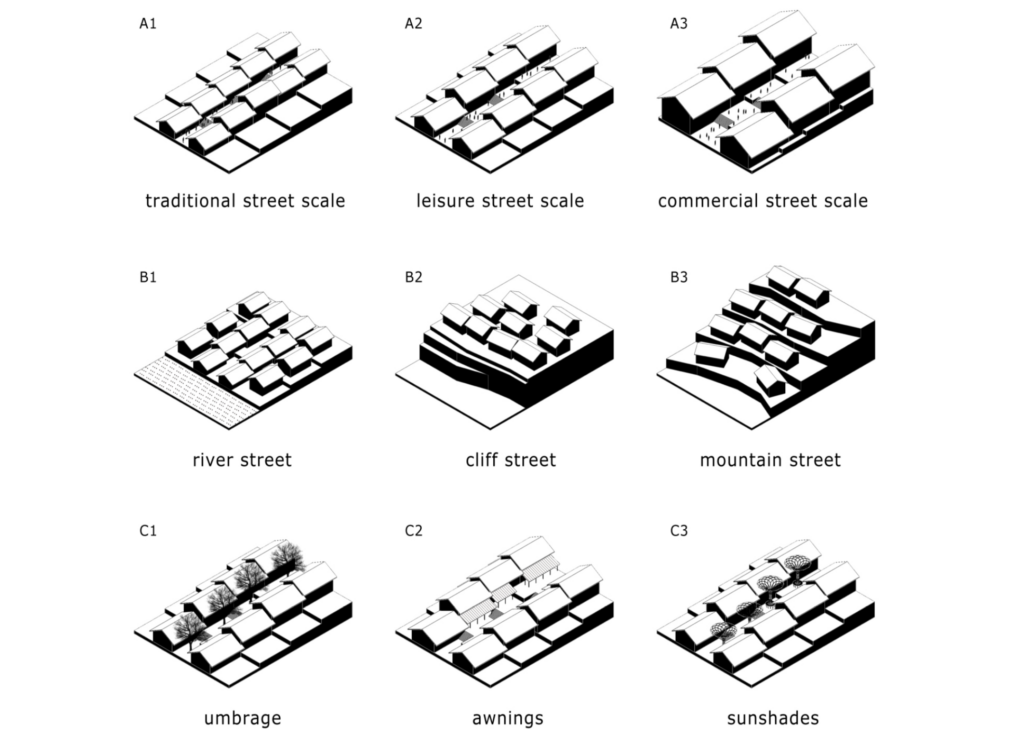
Regain social experiences
1. Build platforms on the side of the street to support diverse public activities (D1-D4)
2. Invite familiar community stores to return to the street (E1, E2)
3. Invite cultural organizations to organize events under the ficus virens, while creating space to accommodate the spontaneous gathering (F1-F6)

Retrospect cultural experiences
1. Create an explorable spatial storyline that connects all historical buildings in the site
2. Invite artists, designers, and filmmakers to participate in scenario design to make historical stories more vivid (G1-G5)
3. Create a multi-dimensional way to convey traditional art to viewers (H1-H3)

Master Plan


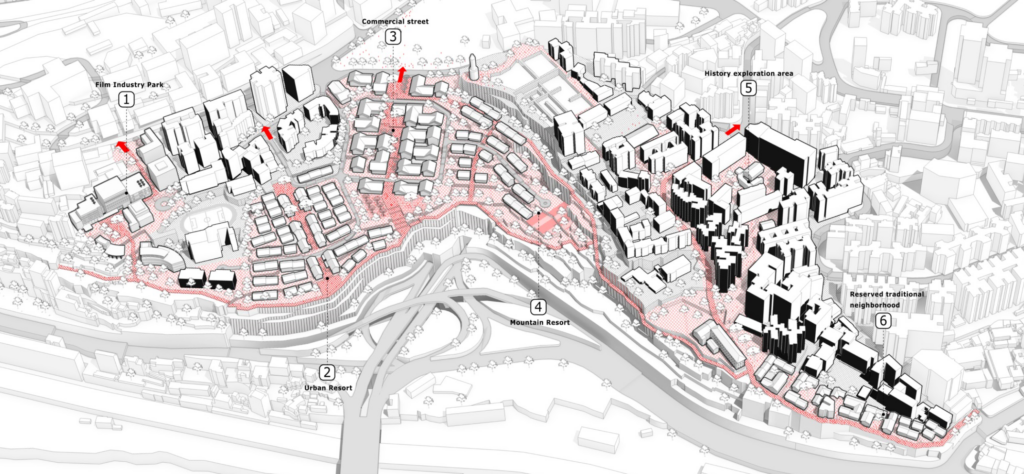

Key Nodes
1. Reserved Traditional Neighborhood
This neighborhood has traditional streets and houses. The structure of the house has been retained and refurbished, maintaining the original neighborhood structure. This is the place where people perceive the most authentic native culture. People can stroll on the old streets, surrounded by wooden or brick structure vernacular houses, or watch a wonderful theater performance, or choose a workshop to sit down and make a handiwork.
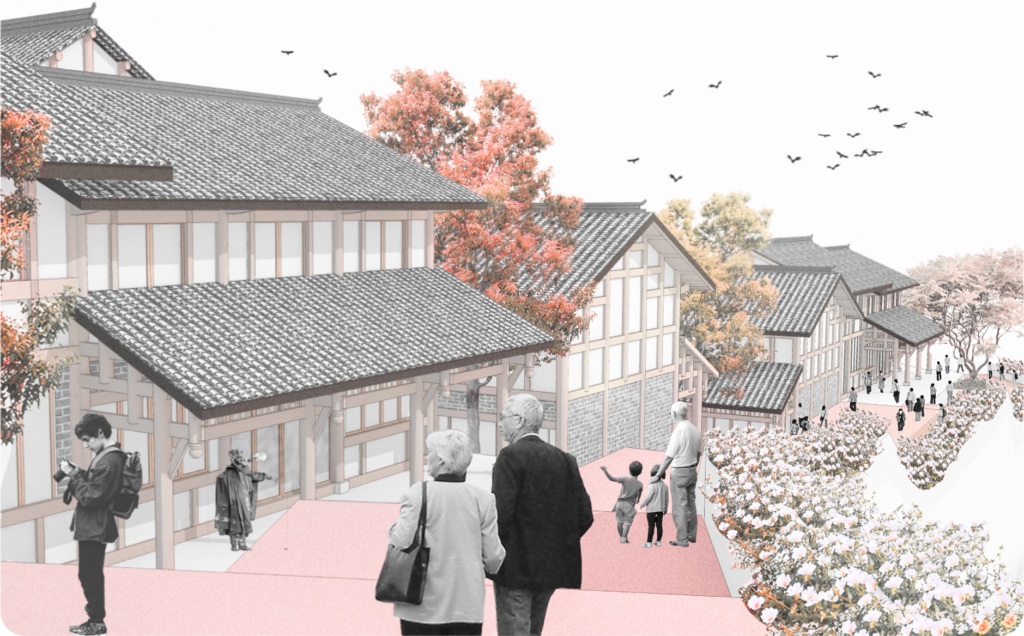
2.History Exploration Area
This area has iconic buildings of different historical periods, scattered in residential areas. People can explore each building following the ground paving, greening, and hints of signs. On the path of exploration, there are some interactive installations, sculptures, videos, and AR historical scenes that can be seen by scanning the QR code. People can immerse themselves in vivid historical situations during exploration.
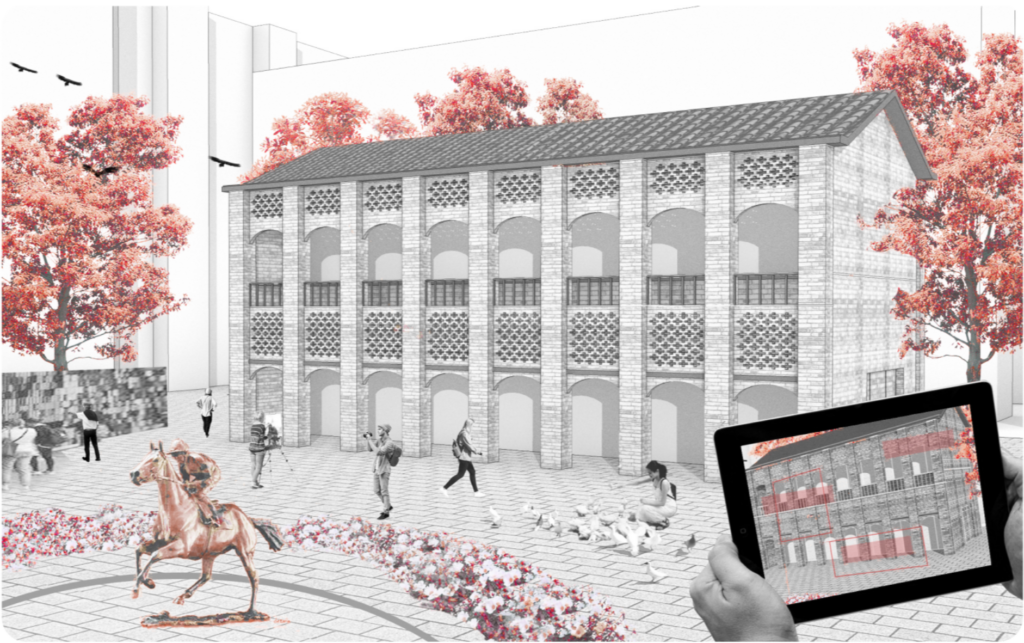
3. Mountain Resort
This area is inspired by the area’s original settlements. Surrounded by green trees, the buildings and streets fall along the slopes, creating a peaceful living atmosphere. This is a place for urban people to find a life experience that is close to nature. They can choose to live here for a few days, take a walk in the woods, or visit the nearby historical buildings.
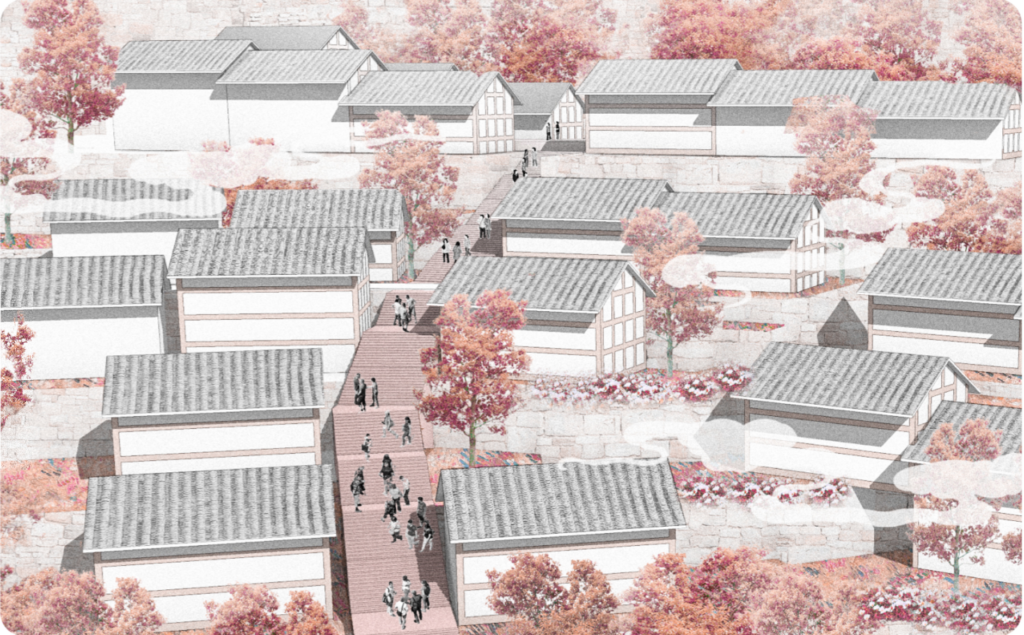
4. Commercial Street
This area is close to the subway station and is where people gather. Traditional scales and styles are combined with modern architecture and landscape design, forming open space to accommodate people. The street pointing to the river, and the leisure chairs are distributed on the platform beside the stairs. People can choose a place to sit and watch the lively market and the distant landscape.
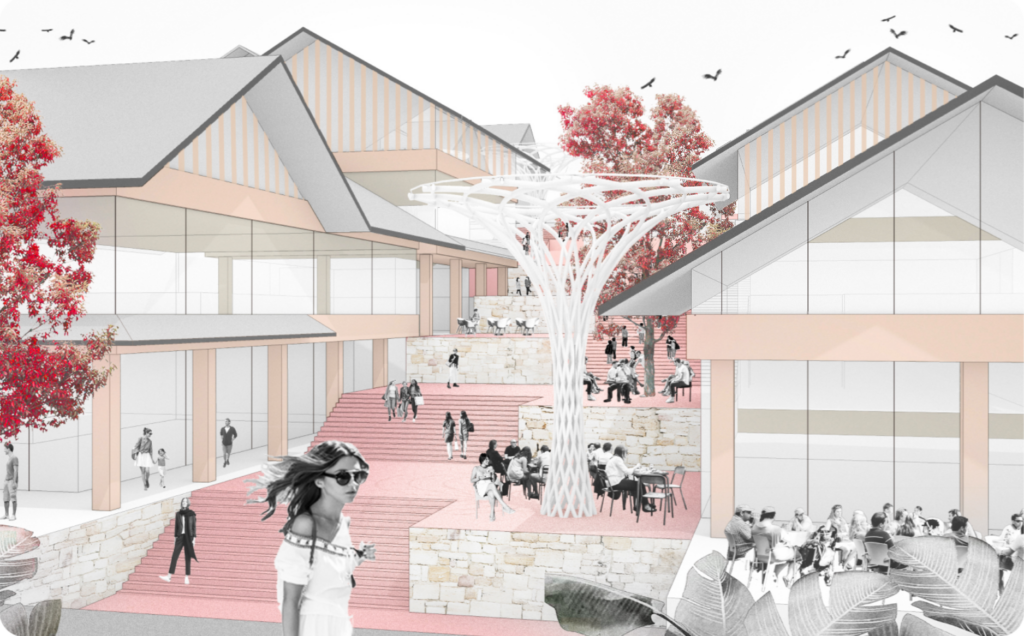
5. Urban Resort
This area is inspired by the area’s original traditional settlements. A street pointing to the river strung people’s lives. Breakfast shops, tea houses, and chess tables spread along the street, recreating the lively city life of yesterday’s city. People can choose to stay here for a few days and chat with other guests on the street. A variety of rally events organized under the tree also bring continuous social vitality to this area.
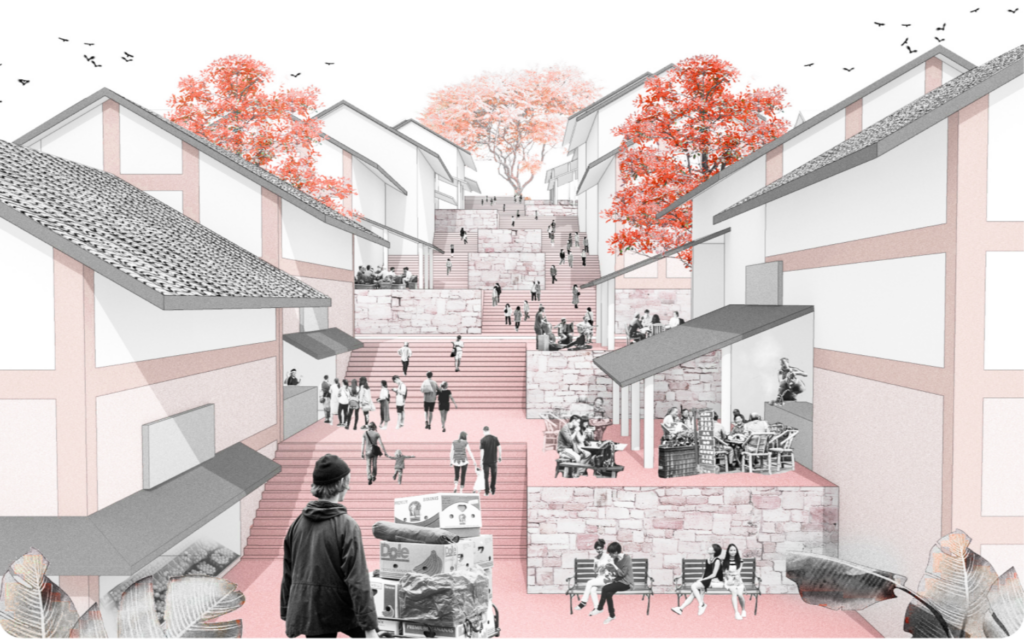
6. Film Industry Park
This area relies on the Chongqing documentary film factory for development. On some nights, short films created by artists and filmmakers are projected on the wide exterior walls of the factory, dynamically tell the story of the city’s past. Some video halls have been built so that visitors can see the detailed documentary. The past spirit and culture of Chongqing are told here time after time to today’s city dwellers.
